RAF Greenham Common
Royal Air Force Greenham Common or RAF Greenham Common is a former Royal Air Force station in Berkshire, England. The airfield was southeast of Newbury, Berkshire, about 55 miles (89 km) west of London.
RAF Greenham Common USAAF Station AAF-486  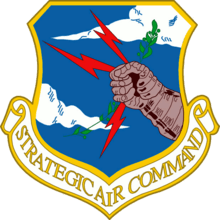  | |||||||||||||||||||
|---|---|---|---|---|---|---|---|---|---|---|---|---|---|---|---|---|---|---|---|
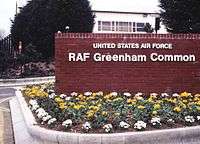 RAF Greenham Common welcome wall in 1990 | |||||||||||||||||||
| Summary | |||||||||||||||||||
| Airport type | Military | ||||||||||||||||||
| Owner | Ministry of Defence | ||||||||||||||||||
| Operator | Royal Air Force United States Army Air Forces United States Air Force | ||||||||||||||||||
| Location | Greenham, Berkshire | ||||||||||||||||||
| Built | 1941 | ||||||||||||||||||
| In use | 1940–1992 | ||||||||||||||||||
| Elevation AMSL | 381 ft / 111,000 m | ||||||||||||||||||
| Coordinates | 51°22′43″N 001°16′56″W | ||||||||||||||||||
| Map | |||||||||||||||||||
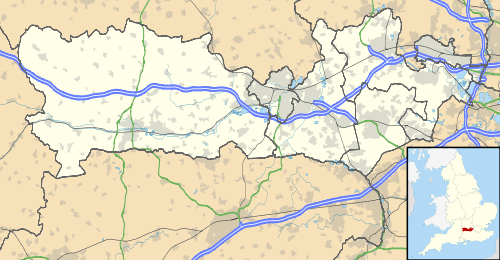 RAF Greenham Common Location in Berkshire | |||||||||||||||||||
| Runways | |||||||||||||||||||
| |||||||||||||||||||
.jpg)

Opened in 1942, it was used by both the Royal Air Force and United States Army Air Forces during the Second World War and the United States Air Force during the Cold War, also as a base for nuclear weapons. After the Cold War ended, it was closed in September 1992.
The airfield was also known for the Greenham Common Women's Peace Camp held outside its gates in the 1980s in protest against the stationing of cruise missiles on the base.
In 1997 Greenham Common was designated as public parkland, effectively returning it to its pre-WW2 status but with restrictions. Greenham and Crookham Commons became a Site of Special Scientific Interest.[1][2] The Cold War era control tower has recently been redeveloped and is now open as a visitor centre with a historical exhibition and community cafe.
Second World War
Before the building of an airfield, Greenham Common was a massive piece of common land. It was used for troop movements during the English Civil War and in the eighteen and nineteenth centuries.
In late 1943, Greenham Common airfield was turned over to the USAAF Ninth Air Force. An American advance party soon arrived to ready the airfield for the incoming units. Greenham Common was known as USAAF Station AAF-486 for security reasons by the USAAF during the war, and it was referred to by this name instead of by location. Its USAAF Station Code was "GC".
The first arrival was the 51st Troop Carrier Wing Headquarters, arriving in September 1942. The 51st TCW controlled the three troop carrier groups at RAF Keevil (62nd TCG), RAF Aldermaston (60th TCG) and RAF Ramsbury (64th TCG) as part of Twelfth Air Force. The Wing Headquarters was located in requisitioned Bowdown House, a mansion on the northeast end of the airfield, and made use of the runways for its communication and courier flights.
The 51st TCW HQ followed its groups to North Africa as part of Operation Torch in November 1942.
354th Fighter Group


As troop carrier groups began arriving in the UK in late 1943 and deployed in the Greenham area, Greenham Common was one of the airfields used by the Ninth Air Force for fighter groups arriving from the United States.
On 4 November the 354th Fighter Group arrived from Portland Army Air Field, Oregon and they were informed they were to fly the North American P-51 Mustang. This was a change of equipment for the group, as they had trained with Bell P-39 Airacobras. The group stayed at Greenham Common for only a few days, being transferred to RAF Boxted in Essex on 13 November.
368th Fighter Group
A few weeks later on 13 January 1944, the 368th Fighter Group arrived from Farmingdale, New York, flying Republic P-47 Thunderbolts. They had the following fighter squadrons and fuselage codes:
- 395th Fighter Squadron (A7)
- 396th Fighter Squadron (C2)
- 397th Fighter Squadron (D3)
The 368th was a group of Ninth Air Force's 71st Fighter Wing, IX Tactical Air Command. The 368th FG moved to RAF Chilbolton the next day.
438th Troop Carrier Group
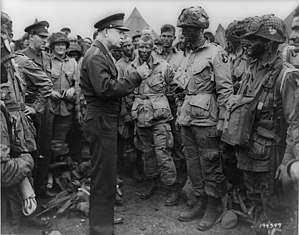
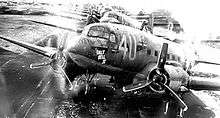
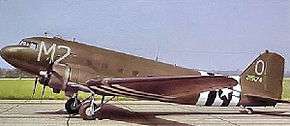
Literally as the 368th FG was moving out, the 438th Troop Carrier Group was flying into Greenham Common from RAF Langar. Flying Douglas C-47 Skytrains, they had the following Troop Carrier squadrons and fuselage codes:
- 87th Troop Carrier Squadron (3X)
- 88th Troop Carrier Squadron (M2)
- 89th Troop Carrier Squadron (4U)
- 90th Troop Carrier Squadron (Q7)
The 438th was a group of Ninth Air Force's 53rd Troop Carrier Wing of IX Troop Carrier Command.
The 90th TCS stayed in the UK and operated from RAF Welford until the rest of the groups aircraft returned from Italy on 24 August. In the absence of the 438th, the 316th Troop Carrier Group used Greenham Common as a forward base.
The airfield was inactive for the next five years, and would probably have remained so but for the sudden escalation in tension between the Soviet Union and its Second World War Allies in what later became known as the Cold War.
Cold War
After the 1948 Berlin Blockade and the 1950 invasion of South Korea by the Korean People's Army, the perceived threat from the Soviet Union rose. On 23 April 1951, RAF Greenham Common was made available to the United States Air Force by the British Ministry of Defence as a Strategic Air Command base, with joint operations with the Royal Air Force units. Formal handover to the 7th Air Division was on 18 June and massive reconstruction work began. Basically, the entire wartime airfield was demolished and replaced with a new 10,000 ft (3048 m) east–west runway with parallel taxiways north and south of it leading to extensive hardstandings. A new technical and domestic site was built to the south of the runway, involving diversion of the A339 road and demolition of several homes and two pubs. Construction work was finally completed and the base declared operational in September 1953.
Strategic Air Command
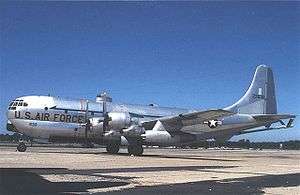
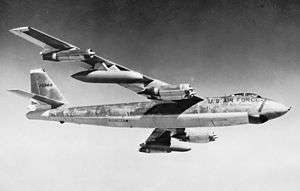

In the post-Second World War years, the United States Strategic Air Command was based at three major airfields in eastern England: RAF Lakenheath, RAF Marham and RAF Sculthorpe. The increasing tension of the Cold War led to a re-evaluation of these deployments and a move further west, behind RAF fighter forces, to RAF Greenham Common, RAF Brize Norton, RAF Upper Heyford and RAF Fairford.
The airfield came under Strategic Air Command's 7th Air Division, with the 3909th Combat Support Group as its administrative unit on the base, responsible for all non-flying activities as well as maintenance and logistical support of the flying units attached to RAF Greenham Common.
The initial bomber wing deployed was the 303d Bombardment Wing with B-47 Stratojets, arriving on 17 March 1954 from Davis-Monthan Air Force Base in Arizona. The 303d stayed just over a month, returning on 28 April 1954. This was the first of the short-term temporary duty deployments from home bases in the US that continued intermittently over the next 10 years. Other known SAC deployments were:
- Greenham Common Task Force (Provisional) (1 November 1955 – UNK) (ERB-29Aa and RB-50G/Es) (Electronic Reconnaissance and Countermeasures) (TDY From 97th Bombardment Wing, Schilling AFB, Kansas)
- 97th Air Refueling Squadron (5 May 1956 – 13 July 1956)(KC-97)
(TDY From 97th Bombardment Wing, Schilling AFB, Kansas) - 310th Bombardment Wing (3 October 1956 – 9 January 1957) (B-47, KC-97)
(TDY Smokey Hill AFB, later renamed Schilling AFB, Kansas) - 40th Bombardment Wing (1 July 1957 – 1 October 1957) (B-47, KC-97)
(TDY Schilling AFB, Kansas)
In April 1958 the 90-day detachments were replaced by a three-week Reflex Alert rotation, during which the bombers did not fly, reducing the noise considerably. The runways and dispersals were further strengthened for the Boeing B-52 Stratofortress bomber, but none were based at Greenham.
From August 1960 the B-52 made periodic training visits, and a Convair B-58 Hustler arrived briefly in October 1963. Reflex operations by B-47 and KC-97s continued until 1 April 1964.
The Strategic Air Command (SAC) departed Greenham Common on 30 June 1964, much to the relief of the local residents; the thundering jet bombers of SAC came no more, and for several years it was used for USAF storage and as a relief base.
United States Air Forces in Europe
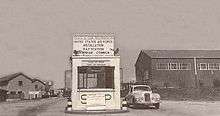
The closure of US bases in France forced the reopening of RAF Greenham Common for air transport operations (Operation FRELOC) to handle materiel and personnel overflow beginning in early January 1967. In late 1967, Greenham Common was used for NATO Exercise REFORGER, again as a result of the withdrawal of France from the NATO integrated military alliance.
On 1 November 1968 control of RAF Greenham Common was transferred from SAC to the United States Air Forces in Europe, with the 7551st Combat Support Group having administrative control of the base. However, the base was little used, primarily being utilised as a United States Military Postal Mail sorting facility, with aircraft flying mail in from the United States, being sorted at Greenham Common, then distributed to American bases in the UK and Europe. Mail from American forces in Europe was also sent to Greenham Common and sorted there, before being flown to the United States.
Beginning in 1973 the base became the home of the International Air Tattoo, a large scale international military airshow, since relocated to RAF Fairford, approximately 40 miles (64 km) away.
The 20th Tactical Fighter Wing at RAF Upper Heyford established "Operating Location A" at Greenham Common for its F-111 fighters in 1976, using the airfield occasionally for dispersal exercises.
In 1977 the USAF announced plans to reactivate the base to house KC-135 aerial refueling tanker aircraft, due to a lack of capacity at the KC-135's main base in Britain, RAF Mildenhall. This led to widespread local opposition, and in 1978 the British Defence Secretary vetoed the plan.
501st Tactical Missile Wing
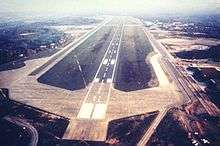
The Soviet deployment of the SS-20 missile from 1975 caused major concern in the NATO alliance. The longer range, greater accuracy, mobility and striking power of the new missile was perceived to alter the security of Western Europe. It was feared that the Soviet Union could launch a nuclear strike against Western Europe with a reduced threat of nuclear retaliation (i.e. compared to an attack on the continental United States). After discussions, NATO agreed to a two part strategy:
- To pursue arms control negotiations with the Soviet Union to reduce the Soviet and American INF arsenals.
- To deploy in Europe from 1983 up to 464 USAF BGM-109G Ground Launched Cruise Missiles or GLCMs, as well as 108 US Army Pershing II ballistic missiles. (See also SLCM and ALCM).
The UK's share of this total was 160 missiles, 96 based at Greenham Common with four spares, and 64 at RAF Molesworth. When in June 1980 it was announced that RAF Greenham Common was to become the first site for cruise missiles, there was an outcry from the Campaign for Nuclear Disarmament. Once more a massive new construction was undertaken as the GLCM Alert and Maintenance Area (GAMA) site was built in the southwest corner of the base. GAMA was a maximum security QRA (Quick Reaction Alert) area with 6 large above ground shelters in which fully operational cruise missiles were stored.

These shelters were specially designed and constructed to protect the GLCMs and crews against nuclear and conventional strikes. They were about 10 m high, with a reinforced 2 m thick concrete ceiling. Below was a massive titanium plate, 3 m of sand and a reinforced concrete plate. The shelters were completely covered with tons of clay. Each shelter was equipped with three hydraulic nuclear blast proof doors at both ends to assure a quick entry or exit. They were designed to withstand the blast of an air-bursting nuclear explosion above the base or a direct hit from a 2,500 lb (1,100 kg) conventional bomb.
Each shelter contained 2 LCC Launch Control Centers and 4 TEL transporter erector launchers. Units were mobile and, once deployed, would travel from the base in convoys to secret preset dispersal sites. This would happen within minutes of the alert being given; movement was via local roads through the surrounding villages.
The first squadron of the 501st Tactical Missile Wing received its weapons in November 1983; they were flown onto the base by Lockheed C-5 Galaxys.
A series of meetings held during August and September 1986 culminated in a summit between United States President Ronald Reagan and the General Secretary of the CPSU Mikhail Gorbachev in Reykjavík, Iceland, on 11 October 1986. To the surprise of both men's advisers, the two agreed in principle to removing INF systems from Europe and to equal global limits of 100 INF missile warheads.
The United States and the Soviet Union signed the Intermediate-Range Nuclear Forces Treaty in 1987, which led to the removal of all nuclear missiles from the base. The last GLCMs at RAF Greenham Common were removed in March 1991, and the 501st TMW inactivated on 4 June 1991.
The base's last operational commander, Group Captain Andrew Brookes, RAF went on to become an aviation author and defence academic.
Greenham Common Peace Camp

From 1981 "women's peace camps" were established in protest at the deployment of cruise missiles. They came to be known as "The Greenham Women" or "peace women", and their 19-year protest drew worldwide media and public attention, often due to the peace women cutting through the fences of the base.
USAF departure and closure
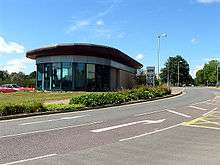
On 11 September 1992, the USAF returned RAF Greenham Common to the Ministry of Defence. On 9 February 1993 the Greenham Common air base was declared surplus to requirements by the Secretary of State for Defence and the facility was closed and put up for sale.
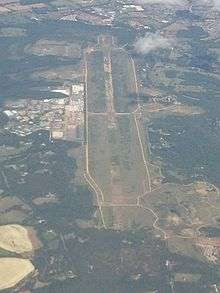
With the departure of the cruise missiles and the subsequent closure of the base by the MOD in 1993, the peace camps remained at the site until September 2000 to ensure the base was closed and the land returned to the public. However, the protesters no longer attracted the attention of the media as they did during the 1980s when there were some 40 camps spread around the base perimeter.
Alleged nuclear accident
On 28 February 1958, a B-47E of the 310th Bomb Wing developed problems shortly after takeoff and jettisoned its two 1,700 gallon external fuel tanks. They missed their designated safe impact area, and one hit a hangar while the other struck the ground 65 feet (20 m) behind a parked B-47E. The parked plane, which was fuelled, had a pilot on board, and was carrying a 1.1 megaton (4.6 PJ) B28 nuclear bomb, was engulfed by flames. The conflagration took sixteen hours and over a million gallons of water to extinguish, partly because of the magnesium alloys used in the aircraft. Although two men were killed and eight injured, the US and UK governments kept the accident secret: as late as 1985, the British government claimed that a taxiing aircraft had struck a parked one and that no fire was involved.
Two scientists, F. H. Cripps and A. Stimson, who both worked for the Atomic Weapons Research Establishment at Aldermaston, stated in a secret 1961 report, released by the CND in 1996, that the fire detonated the high explosives in the nuclear weapon, that plutonium and uranium oxides were spread over a wide area (foliage up to 8 mi (13 km) away was contaminated with uranium-235) and that they had discovered high concentrations of radioactive contamination around the air base.[3]
However, a radiological survey commissioned in 1997 by Newbury District Council and Basingstoke and Deane found no evidence of a nuclear accident at Greenham Common, suggesting that Cripps and Stimson's statements were false. The seven-month long survey was carried out by the Geosciences Advisory Unit of Southampton University and combined a helicopter-mounted gamma ray detector survey with a ground-based survey. The team analysed nearly 600 samples taken from soil, lake sediment, borehole water, house dust, runway tarmac and concrete, looking for uranium and plutonium isotopes. No evidence of an accident involving nuclear weapons damage was found at the former air force base although the ground survey detected some low-level uranium contamination around the Atomic Weapons Establishment at Aldermaston thought to be derived from that facility, and the helicopter survey found some anomalies around Harwell Laboratory.[4]
In popular culture
The airfield was used In the sixth series of London's Burning where the production team built a petrol garage and diner to be used in a large incident in episode 7.
An episode of BBC's Top Gear was filmed at the abandoned airfield, with Jeremy Clarkson and James May attempting to find out if communism had produced a good car.
Beyoncé used the airfield to film scenes for her 2013 self-titled visual album.
In the 1996 video game, Broken Sword: The Shadow of the Templars, Lady Piermont mentions Greenham Common after helping George Stobbart get the Templar manuscript.
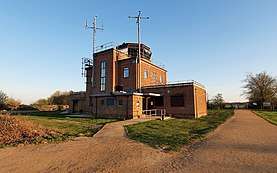
Greenham Common airfield was used as a filming location for the 2015 film Star Wars: The Force Awakens and 2017 film Star Wars: The Last Jedi. The GAMA area was used as the location for the above ground Resistance base on the fictional planet D'Qar.[5]
Greenham Common airfield was also used as a filming location for the 2019 film Fast and Furious 9
Notes
![]()
- "Magic Map Application". Magic.defra.gov.uk. Retrieved 19 March 2017.
- "SITE NAME: GREENHAM AND CROOKHAM COMMONS" (PDF). Retrieved 19 March 2017.
- The Distribution of Uranium 235 and Plutonium 239 around the United States Airforce base at Greenham Common, July 1961 by F H Cripps & A Stimson, AWRE, Aldermaston
- Greenham Common given 'all-clear'-leaving childhood leukaemia clusters a mystery Archived 11 December 2005 at the Wayback Machine, Southampton University in-house newsletter New Reporter Vol 14, No 12, 10 March 1997
- "Star Wars surprise: Millennium Falcon and X-Wing pictured". BBC News. 10 September 2014. Retrieved 11 September 2014.
Bibliography
- Fletcher, Harry R. (1989) Air Force Bases Volume II, Active Air Force Bases outside the United States of America on 17 September 1982. Maxwell AFB, Alabama: Office of Air Force History. ISBN 0-912799-53-6
- Freeman, Roger A. (1994) UK Airfields of the Ninth: Then and Now 1994. After the Battle ISBN 0-900913-80-0
- Maurer, Maurer (1983). Air Force Combat Units of World War II. Maxwell AFB, Alabama: Office of Air Force History. ISBN 0-89201-092-4.
- Ravenstein, Charles A. (1984). Air Force Combat Wings Lineage and Honors Histories 1947–1977. Maxwell AFB, Alabama: Office of Air Force History. ISBN 0-912799-12-9.
- Rogers, Brian (2005). United States Air Force Unit Designations Since 1978. Hinkley, England: Midland Publications. ISBN 1-85780-197-0.
- Sayers, Jonathan (2006) In Defense of Freedom, a History of RAF Greenham Common
- Stokes, Penelope (2017). The Common Good: The story of Greenham Common ISBN 978-1-5272-0785-1
External links
| Wikimedia Commons has media related to RAF Greenham Common. |

.svg.png)